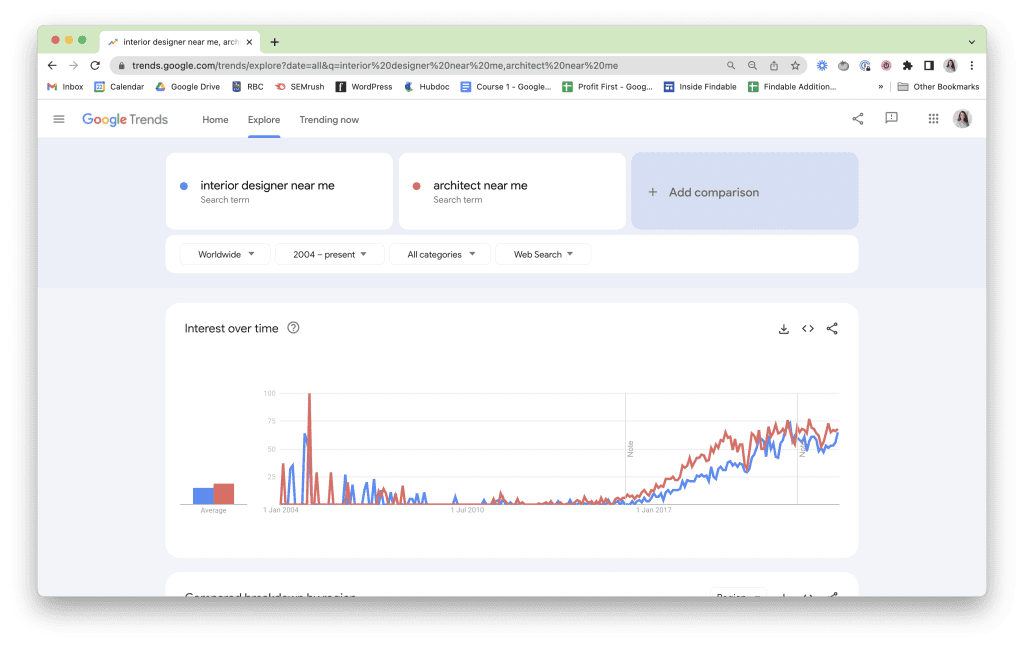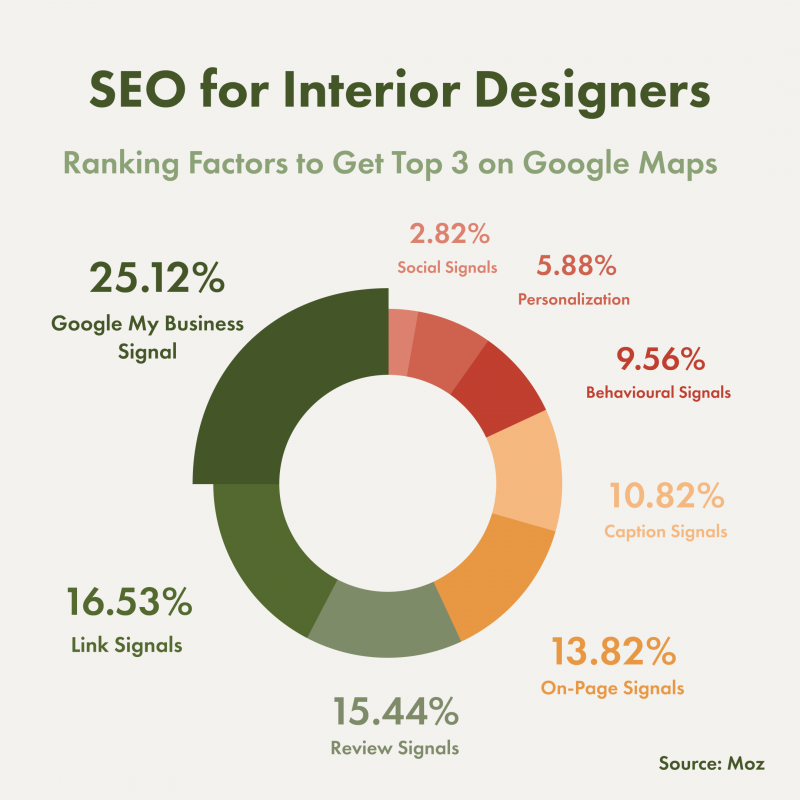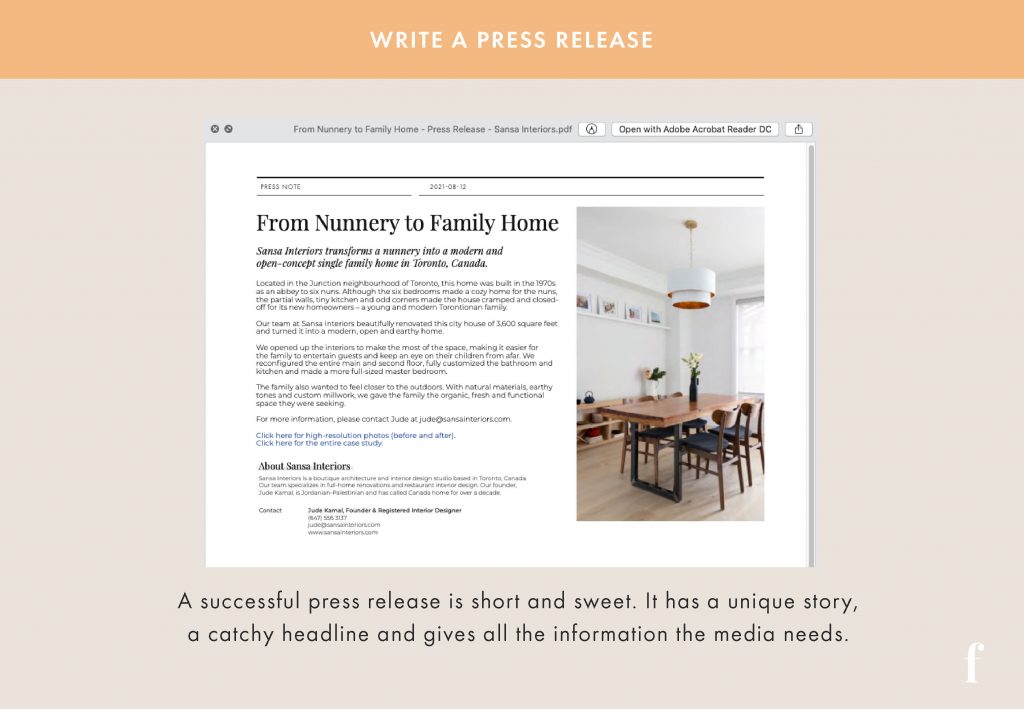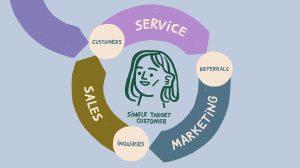Written by Daniela Furtado
SEO is complex and overwhelming but there are some low-hanging fruits. We break down our beginner tips and techniques on SEO for interior designers to help you get started.
Word of mouth is great business and even better marketing – until now. Unfortunately, a good reputation is not enough for a business to stick out in today’s digital and competitive market. For decades, interior design and architecture firms never had to do marketing. A firm could see 7 figures in annual revenue even with an abandoned website and searching for an architect or designer on Google was rare. Today, it’s becoming the norm.
In January 2016, Google Trends reported 0 searches for the term “interior designer near me”. Today? A reported 60,000 searches a month worldwide.

The design and architecture industry has a complicated history with marketing – a topic Dr. Brynne Campbell explores in her paper, Marketing Architecture in Canada: Exploring the Architecture Profession’s Understanding and Use of Marketing. This history has held the industry back from training university students in the business or providing professionals with marketing seminars at conferences towards their CEUs. And to add salt to injury, marketing is closely tied to technology meaning it evolves tremendously quickly.
In this blog post, I’ll give you a short-and-sweet introduction to one area of digital marketing – search engine optimization, or SEO.
Jump Ahead
- Social Media vs. Google: Which One Should Interior Designers Use?
- 12 SEO Tips for Interior Designers
- Beef Up Your Google My Business (GMB) Account
- Get Reviews on Google My Business
- Set Up Basic Technical SEO
- Connect Your Website with Analytics
- Do Your Keyword Research
- Optimize Your Service Page
- Make the Most Out of Your Portfolio and Blog Posts
- Reclaim Links From the Press
- Submit Your Projects to Design Magazines
- Don’t Ignore Image SEO
- SEO for E-Commerce
- Invest in Google Ads
Social Media vs. Google: Which One Should Interior Designers Use?
Whether it’s Instagram, Tik Tok or Google, any online platform can help your design studio get eyeballs … but which one will turn those views into clients?
Social media platforms often make great visual portfolios for interior designers. Instagram, Tik Tok and Pinterest make it easy for designers to share their work, share the story behind it and become “viral” or a household name. However, it’s also important to note that people often get on social media to kill time and idly browse.
We go to social media to scroll, not to buy. Even if your photo garners thousands of views, it doesn’t mean every one of those viewers is a property owner looking for a designer.
Search engines like Google and Yahoo, on the other hand, are where we go to find answers and solutions.
We are more likely to go to Google to buy. We go to Google when we’re looking to buy furniture for our new home or to look for a professional near us to redesign our home, office, or garden.
If your website ranks on the first page of Google for keywords related to your service, you’ll know that each website visitor is a potential customer – not just a lurker.
With that said, social media algorithms are far less complex than Google’s. Getting thousands of views on social media is easier than ranking top 3 on Google.
Which digital marketing platform should interior designers use? Social media or Google? I think the answer depends on what your goals are. Social media is fantastic for brand awareness (read: popularity) and Google is brilliant for sales.
12 SEO Tips for Interior Designers
Google’s algorithm can be complex and overwhelming. If you’re dabbling and wondering if Google can be a good means to getting clients, we’ve compiled a list of beginner SEO tips and techniques to help interior designers get started.
1. Nurture Your Google My Business (GMB) Account
Everyone raves about technical SEO, site maps, and meta descriptions. While they’re important, they alone can’t help small businesses meet their objectives.
Create an account on Google My Business, or recently named Business Profile, and you can get your interior design studio ranking on Google Maps. This can be your real money maker. Not technical SEO.
If you optimize your GMB correctly, it’s one of the easiest ways to get top 3 on Google Maps within your city. Shortly after, you’ll see dozens of inquiries calling or emailing you about your services. We’ve helped our clients do this and it works brilliantly.
Here are some quick tips to help you optimize your GMB account:
- Make sure you’re filling everything in. Fill out every box and description about your business to help Google better display your listing
- Include keywords. Use keywords across your account details, i.e. in your business description, business title, etc.
- Include images. Use photographs of your offerings
- Update your GMB account regularly. You can update your GMB by sharing ongoing offers, refreshing open/working hours, etc.
2. Get Reviews on Google My Business
One of the most common mistakes we see interior designers and architects make is ignoring their Google My Business accounts, but more specifically, ignoring their reviews.
Reviews make up 15% of Google Maps’ ranking factors.

Pull up a list of the customers you’ve worked with within the past year and kindly ask them to leave a review on your GMB account. Encourage them to not just leave 5 stars, but also write a detailed review about your services.
Don’t just ask for reviews once in a while, make it a point to actively get reviews. Build review management into your process. This may mean sending an automated email once the project is done or the final invoice is paid, with a link and questions to help clients leave a review promptly. Find whatever works for you, as long as it doesn’t go ignored.
3. Set Up Basic Technical SEO
Unless you have an e-commerce, a multilingual website or a website that lists more than 500 pages, technical SEO is pretty simple for most small to medium business owners to figure out.
Here are the basics when it comes to technical SEO for interior designers :
- Get organized. Craft an organized website structure so that most pages are never more than 3 clicks away from each other.
- Use SSL. Make sure your website has a Secure Sockets Layer (SSL) to keep your data safe.
- Be mobile-friendly. Ensure your website is mobile-friendly and responsive or visitors will leave immediately.
- Fix or replace broken links. It’s 2022 folks, please remember to check for broken links, both internal and external, and fix or replace them.
- Include target keywords in the metadata. If you haven’t already, fill in your metadata and include your targeted keywords in it.
- Submit a sitemap. If you’d like to advance your technical SEO, submit your site map. It’ll help viewers better navigate your website.
- Hire a professional. Leave the more advanced features, like canonical tags or hreflang, to the experts (like us).
4. Connect Your Website with Analytics
Want to know if your SEO is working? Connect your website to web analytics tools like Google Analytics (GA) and Google Search Console (GSC).
Both Google Analytics and Google Search Console are free tools. The difference is that GSC is the data of how your website is performing on Google search results pages, and GA is the data once users are on your website.
This data can help you figure out what is working and what needs to be improved. Which keywords are you currently ranking for? How’s your positioning for those keywords in different markets? Which ones are driving the most conversions?
Whether or not you know how to read the data, we highly recommend setting it up now so later on, you have data to work with to study on your own time or hire a professional to comb through.
5. Do Your Keyword Research
This is the BIG one.
A common mistake we see interior designers make is choosing keywords that are too broad or not suitable for their business goals. Not all interior design keywords are the same, and knowing which ones to use could make all the difference for your business.
For example, we see interior designers write blog posts targeting keywords like:
- “how to choose paint colours”
- “inspiration for modern home redesign”
- “tips to buying cabinets”
While these keywords could bring a lot of traffic to your website, these DIYers probably aren’t your target customers.
When you use the wrong keywords, you attract the wrong kind of traffic for your business.
Instead, put yourself in your target customer’s shoes and try to imagine what they’re searching for on Google when they’re interested in hiring a professional – not when they’re DIYing.
For example, more suitable keywords for your website could be:
- “interior design studio in Indiana”
- “restaurant interior designers in Montréal”
- “experiental design consultants in NYC”
Brainstorm a list, use a tool to find the volume and narrow down 1 to 5 keywords per page on your website. For more information, we’ve written about our complete process to keyword research for interior designers here.
6. Optimize Your Service Page
Once you’ve researched your keywords, now it’s time to use them on your website. In other words, it’s time to optimize your website.
We recommend starting with your home page and your service page. These are the most important pages on your website to drive traffic.
When you’re writing or rewriting your website copy, keywords should naturally fit into your content so that you aren’t keyword stuffing, a “black-hat” SEO practice that goes against Google’s guidelines and could get you penalized.
Here are some other tips to help you optimize your service pages:
- Write longer content. It’s difficult to use a keyword enough times to rank if the page only has 200 words. Write more content (say 800 words) and go into detail about your service, process, and even show case studies or testimonials. More content will give you more opportunities to target multiple keywords.
- Use keywords in the right places. While writing your content, follow this checklist to make sure you’re using keywords correctly and optimizing the page:
- Use in title
- Use in URL
- Use in first intro paragraph
- Use in first H1
- Use in H2s and H3s when relevant
- Overall, use around 8-10 times for every 1,000 words throughout the body paragraph where appropriate
- Use in meta title and description
- Use in image alt tag where appropriate
7. Make the Most Out of Your Portfolio and Blog Posts
One of our biggest pet peeves is when we see designers slab photos of their projects on their websites with little or no description text to accompany the images. Without context, we have no idea what you did to the space. Did you tear down the walls or add pillows?
Here’s what we recommend you do instead.
Turn your portfolio into case studies and blog posts.
Describe your work, your approach and process, the challenges you came across while working on the project and how you overcame it, and so on. Tell us the story and show us your expertise behind each project – instead of just showing us photos and hoping for us to figure out the value on our own.
While you’re writing your portfolio and blog posts, don’t forget to do keyword research and optimize your content for keywords.
8. Reclaim Links From the Press
Have you been featured in an online magazine or website within the past 6 months?
Revisit the article to see if the publishers left a link to your website. If they didn’t, get in touch with them and claim it. We recommend contacting the editor and kindly asking them to add a link to your website.
When another website mentions and links to yours, that’s validation. Not just by your own community and industry, but also by search engines. These are called backlinks and this is why backlinks are the highest weighted ranking factor in Google’s algorithm.
Reclaiming unlinked mentions from the press is an easy way to get more backlinks.
9. Submit Your Projects to Interior Design Magazines
Getting featured in a design magazine can make a big difference in your interior design career and could be a game-changer for your business. It can launch your interior design business to a broader audience, give you credibility and social proof, and attract new clients.

A common misconception is that you need to have connections to get published. It helps, but no journalist or editor will be interested if you don’t have a unique story or project, even if you have a relationship with them.
We wrote how we help our clients get published in design magazines in detail here, but here are the key takeaways you need to know when submitting your project to magazines:
- Pitch a unique story. Think of a story that will pique the interest of publishers and editors. What makes you stand out?
- Add a story to your photos. Give people and journalists a chance to understand and write about your projects.
- Choose suitable magazines. Look for something that not only share a similar aesthetic to your project but also cater to your target audience.
- Consider writing a press release. This will help you distribute your project easily to journalists.
- Help them see the win-win. Show them how this collaboration can benefit both the magazine and you.
- Follow up. Follow up with them in a reasonable and respectful capacity. Don’t bombard them with calls or emails.
- Try to build and maintain relationships. You’ll meet many individuals at different magazines and get the opportunity to build a professional relationship. If you leave a good impression, it could pay off in the future.
- Maintain a professional website. A well-designed website with high-resolution images reflects your credibility and can influence trust in magazines.
10. Don’t Ignore Image SEO
Whether it’s Google Images or Pinterest, you can also “SEO” your images to drive traffic to your website.
Here are some quick and easy ways to optimize your images:
- File name. Use keywords in the image file name before uploading.
- Alt tags. Add alt tags using keywords, if relevant, to each image.
- Captions. Fill in your image description or caption with targeted keywords to explain the image to both search engines and anyone using a screen reader.
- Compress. Use Photoshop or online web tools to compress your images so that they don’t weigh down your website speed.
11. SEO for E-Commerce
Have an online shop?
Many of our interior design clients sell furniture or fixtures as a secondary revenue stream on their websites.
Look into registering for Google Merchant Center to get on Google Shopping and follow the same SEO guidelines we mentioned earlier in your website copy.
Consider using targeted keywords in your headlines, product descriptions, individual pages for each product, and such to improve your chances of getting ranked on the top page of Google.
12. Invest in Google Ads
If you have the money to invest, Google Ads can supercharge your SEO efforts.
While SEO can take several months to see results, Google Ads can help fill in the gap and “supercharge” until your SEO efforts kick in. What’s more is that if you already have good SEO, this can help decrease the cost-per-click (CPC) on your Google Ads.
If you’re curious to get started, we wrote a guide on Google Ads for interior designers here.
Daniela Furtado
Daniela Furtado is a consultant, writer and speaker on how to make businesses easy to find online. She is the founder and CEO of Findable Digital Marketing. Off the clock, she enjoys cooking, dancing, and drawing. She is based in Toronto, Canada.
 Personal Branding for Architects and Interior Designers
Personal Branding for Architects and Interior Designers The Good, The Bad and The Ugly of Keyword Data
The Good, The Bad and The Ugly of Keyword Data Our “Secret Sauce” to Choosing Keywords for Designers
Our “Secret Sauce” to Choosing Keywords for Designers

